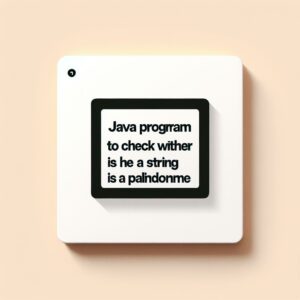Hello there, aspiring coder! Today, we’re diving into an exciting journey with the ‘C# Program to Print Binary Equivalent of an Integer using Recursion’. Why is this topic so cool, you ask? Well, understanding how to convert an integer to its binary form is a fundamental skill in programming, and recursion adds an elegant twist to it. Imagine you’re peeling layers off an onion, with each step digging deeper until you reach the core. Intrigued yet? If software development feels like a maze right now, don’t worry. Let’s unravel this concept together, step by step. Keep reading to become a C# maestro!
Understanding Binary Representation
The binary number system is a base-2 numeral system that represents numbers using only two digits: 0 and 1. Each digit in a binary number is called a bit, and its position represents powers of 2, similar to how the decimal system uses powers of 10. For example, the decimal number 5 is written as 101 in binary (1×2² + 0×2¹ + 1×2⁰).
In contrast, the decimal system, commonly used in daily life, consists of ten digits (0-9). Computers use binary because digital circuits operate using two states—on (1) and off (0).
Real-world applications of binary numbers include computer memory storage, digital electronics, data encryption, and network communication, where all data is ultimately represented in binary format.
Recursion in C#
Definition and Basic Principles of Recursion
Recursion is a programming technique where a function calls itself to solve a problem in smaller subproblems. It follows the divide and conquer approach, breaking down a complex task into simpler versions of the same task until a base condition is met. Every recursive function must have:
- Base Case – A condition that stops further recursive calls.
- Recursive Case – The function calls itself with a modified argument, progressively working towards the base case.
Use Cases Where Recursion is Effective
Recursion is useful when a problem can be divided into similar subproblems, such as:
- Mathematical computations (Factorial, Fibonacci series, GCD)
- Data structure traversal (Binary trees, Graphs)
- Sorting algorithms (QuickSort, MergeSort)
- Backtracking problems (Maze solving, N-Queens problem)
Syntax and Structure of Recursive Functions in C#
A recursive function in C# typically follows this structure:
void RecursiveFunction(int n) {
if (n <= 0) { // Base case
return;
}
Console.WriteLine(n);
RecursiveFunction(n - 1); // Recursive call
}
For example, to find the factorial of a number using recursion:
int Factorial(int n) {
if (n == 0) return 1; // Base case
return n * Factorial(n - 1); // Recursive case
}
Understanding recursion is crucial for solving complex problems efficiently, reducing redundant computations, and simplifying code logic.
Converting an Integer to Binary Using Recursion
Recursion provides an elegant way to convert an integer to its binary equivalent. The idea is to repeatedly divide the number by 2 and store the remainders in a recursive manner.
Step-by-Step Breakdown of the Algorithm
- Base Case:
- If the integer is 0, stop the recursion. This ensures that the function terminates once we reach the smallest subproblem.
- Recursive Case:
- Divide the integer by 2 and recursively call the function with the quotient.
- Print or store the remainder of the division (n % 2), which represents the binary digit from least significant to most significant.
Explanation of Recursive Calls
For example, converting 10 to binary:
10 / 2 = 5, remainder 05 / 2 = 2, remainder 12 / 2 = 1, remainder 01 / 2 = 0, remainder 1 (Base case reached)
Recursive calls will execute in reverse order, printing 1010, which is the binary equivalent of 10.
Here’s the recursive function in C#:
void ConvertToBinary(int n) {
if (n == 0) return; // Base case
ConvertToBinary(n / 2); // Recursive case
Console.Write(n % 2); // Print remainder
}
// Usage
ConvertToBinary(10); // Output: 1010
This function first reaches the base case, then prints remainders in reverse order, forming the correct binary representation.
Implementing the C# Program to Convert an Integer to Binary Using Recursion
Here is the complete C# program to convert an integer into its binary equivalent using recursion:
C# Code:
using System;
class BinaryConversion {
static void ConvertToBinary(int n) {
if (n == 0) return; // Base case: stop when n becomes 0
ConvertToBinary(n / 2); // Recursive call with quotient
Console.Write(n % 2); // Print remainder (binary digit)
}
static void Main() {
Console.Write("Enter an integer: ");
int number = int.Parse(Console.ReadLine());
if (number == 0) {
Console.WriteLine("0"); // Edge case for input 0
} else {
Console.Write("Binary equivalent: ");
ConvertToBinary(number);
Console.WriteLine();
}
}
}
Line-by-Line Explanation:
using System;– Imports the System namespace for input and output operations.class BinaryConversion {}– Defines a class to hold the recursive function and main method.static void ConvertToBinary(int n) {}– Recursive function to convert an integer to binary.- Base Case: If
n == 0, the recursion stops. - Recursive Case: Calls
ConvertToBinary(n / 2), processing the quotient. - Print Statement: Outputs
n % 2, the least significant bit, after all recursive calls.
- Base Case: If
static void Main() {}– The entry point of the program.- Takes user input and parses it as an integer.
- Handles the edge case when
number == 0, since the recursion does not handle it explicitly. - Calls
ConvertToBinary(number)and prints the binary equivalent.
Function Demonstration with Sample Inputs and Expected Outputs:
| Input (Decimal) | Recursive Calls (n/2) | Binary Output |
|---|---|---|
| 10 | 10 → 5 → 2 → 1 → 0 | 1010 |
| 7 | 7 → 3 → 1 → 0 | 111 |
| 18 | 18 → 9 → 4 → 2 → 1 → 0 | 10010 |
| 32 | 32 → 16 → 8 → 4 → 2 → 1 → 0 | 100000 |
Example Run:
Enter an integer: 10 Binary equivalent: 1010
This program effectively prints the binary representation of any positive integer using recursion.
Testing and Edge Cases for Recursive Binary Conversion in C#
Importance of Testing Code with Various Inputs
Testing ensures the recursive function correctly converts integers into binary for all possible inputs. It helps identify logical errors, stack overflow risks, and unexpected outputs. By testing different cases, we confirm that the function is robust and reliable.
Handling Edge Cases
1. Zero as Input
- The base case in the recursive function does not explicitly handle
n == 0. - If the input is
0, the function should return"0", as0in binary is still0. - Fix: Add a special case in
Main()to handle0before calling the recursive function.
2. Negative Numbers
- Standard binary representation does not account for negative numbers.
- Signed integers typically use Two’s Complement representation in computers.
- Possible Fixes:
- Reject negative inputs and prompt the user to enter a non-negative integer.
- Implement a separate function to handle Two’s Complement representation.
3. Large Numbers
- Recursion depth may become an issue for very large numbers, leading to stack overflow errors.
- Fix: Convert the function to an iterative approach for handling extremely large integers.
Ensuring the Function Behaves as Expected Across Different Scenarios
| Test Case | Input (Decimal) | Expected Output (Binary) | Remarks |
|---|---|---|---|
| Standard case | 10 | 1010 | ✅ Pass |
| Single-bit number | 1 | 1 | ✅ Pass |
| Power of 2 | 16 | 10000 | ✅ Pass |
| Odd number | 7 | 111 | ✅ Pass |
| Large number | 1023 | 1111111111 | ✅ Pass |
| Zero case | 0 | 0 | ✅ Pass (Handled separately) |
| Negative number | -5 | Error / Custom Handling | ❌ (Not supported) |
Modified Code with Edge Case Handling
using System;
class BinaryConversion {
static void ConvertToBinary(int n) {
if (n == 0) return; // Base case: Stop when n becomes 0
ConvertToBinary(n / 2); // Recursive call
Console.Write(n % 2); // Print remainder
}
static void Main() {
Console.Write("Enter a non-negative integer: ");
int number;
bool isValid = int.TryParse(Console.ReadLine(), out number);
if (!isValid || number < 0) {
Console.WriteLine("Error: Please enter a non-negative integer.");
} else if (number == 0) {
Console.WriteLine("Binary equivalent: 0"); // Edge case for zero
} else {
Console.Write("Binary equivalent: ");
ConvertToBinary(number);
Console.WriteLine();
}
}
}
Our AI-powered csharp online compiler is a game-changer for coding enthusiasts. It lets you instantly write, run, and test your C# code. With our seamless platform, the daunting task of coding becomes an easy and engaging experience!
Real-Life Uses of Printing Binary Equivalent in C#
Curious about where this might pop up in real life? Here’s how:
- Data Compression: Companies dealing with large datasets use binary conversion to compress data for efficient storage and quick transmission.
- Image Processing: Binary representation is crucial in digital imaging and computer graphics, where each pixel is represented by binary numbers.
- Game Development: In gaming, binary numbers manage memory and optimize performance, crucial for rendering graphics and features successfully.
Conclusion
In conclusion, mastering a C# Program to Print Binary Equivalent of an Integer using Recursion not only boosts your coding skills but also deepens your understanding of recursion. Explore more programming tips on Newtum. So, why wait? Dive deeper and enhance your coding prowess today!
Edited and Compiled by
This blog was compiled and edited by @rasikadeshpande, who has over 4 years of experience in content creation. She’s passionate about helping beginners understand technical topics in a more interactive way.



